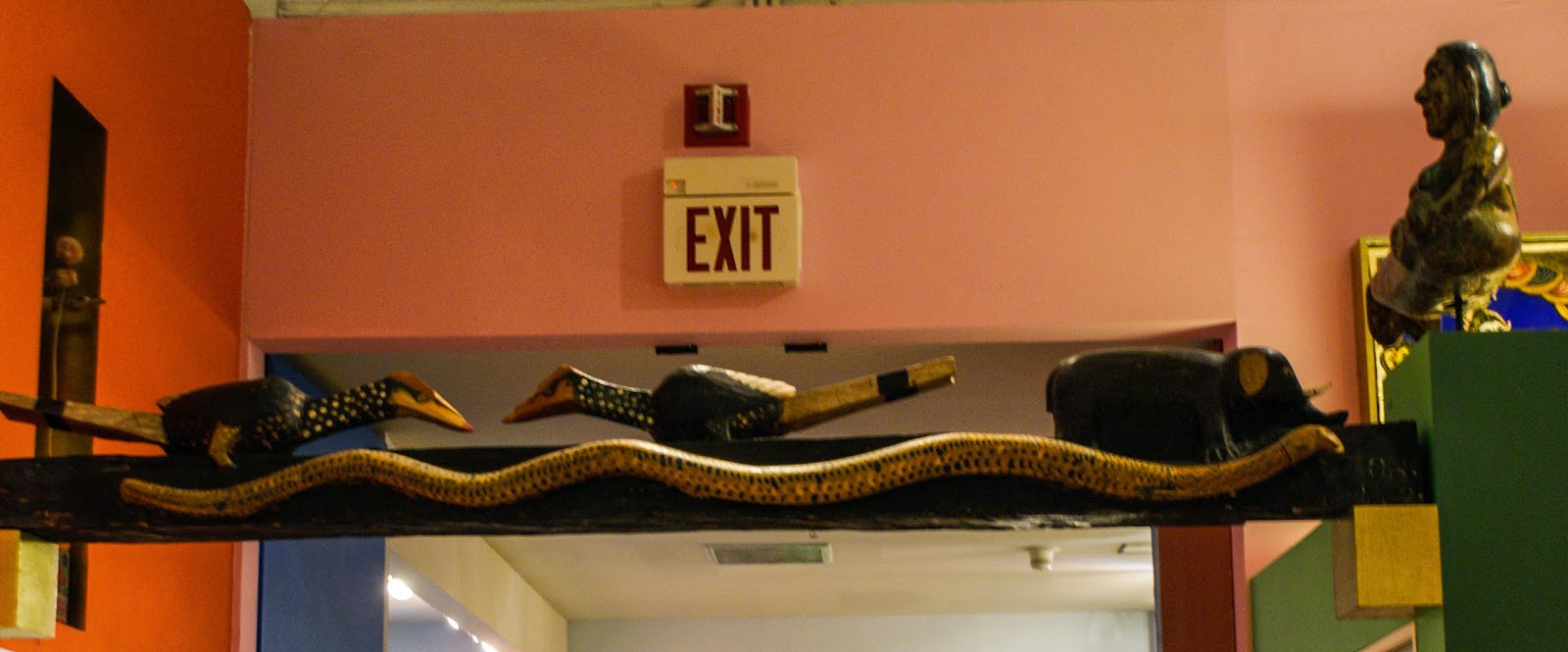One of the more difficult things to do here is to decide where to spend your time. Today, we opted for the International Folk Art Museum. It is situated along the Santa Fe Trail.
The plaza entering the museum is fascinating in and of itself. Here is a spirit maze. It represents the directions one chooses and the impacts they make on our lives. The center is dark, traversing the maze can represent the journey from light to darkness, or darkness to light depending on which direction one traverses it.
At the top of the plaza is the Laboratory of Anthropology. Penny would loved to have looked over the shoulders of the people who work there.
To the left of the plaza entrance, outside the Native American Art Museum, is this statue of an Apache Mountain Spirit Dancer.
The bench outside the Folk Art Museum is a work of art in itself. This outstanding museum, opened in 1953, was founded by Florence Dibell Bartlett who donated 2500 objects. By far the greatest part of these displays, 106,000 objects, were donated from the collection of Alexander and Susan Girard. Alexander Girard was an architect, interior, and textile designer. He designed the uniforms for the Braniff airlines stewardesses. You may remember that many of those uniforms were quite avant-garde. Penny had a cousin who was a stewardess for Braniff and Ted briefly dated a Braniff stewardess (not Penny's cousin). How serendipitous is that? This type of connection is one of the many reasons we love this lifestyle.
The gift shop, near the entrance, is perhaps the most fascinating one we've ever been in.
This lentel, which now marks the entrance to an exhibit of Hindu art. Perhaps this lentel once graced the entrance to a Hindu temple. Serpents are regarded as potent guardians The peacocks symbolize spring, birth, growth and love. To the right is an elephant. Elephants are sacred in India. They represent Lord Ganesha, oldest son of Shiva, who had the head of an elephant. An elephant figure is present in almost all Hindu temples.
The exhibits were truly international. Next to the exhibit focusing on the art of India was this Thai household spirit temple. Across the aisle, behind it is a collection of doll houses from late nineteenth and early twentieth century England and the U.S.
Just the tapestries surrounding the exhibit room were worth the trip.
Here is a Peruvian festival. Note the cathedral in the background and the costumed figure to the right.
This display represents a festival at a pueblo in the American Southwest. There is a mixture of Catholic and Native American rituals which, over the years, have become almost indistinguishable from each other.
The scene comes complete with tourists taking photographs.
Anyone who is a member of PETA may wish to look away. This scene depicts a cockfight.
This one, a Plaza de Toros. The display is shallower than it appears. This effect is created by the continuous scale-down of the figures as they get further back from the action.
One of the featured exhibits at this time are the folk art of Brazil.
These puppets are a part of the Brazilian exhibit.
Nearby were these cutouts which kids could use to color their own puppets.
Next door was an exhibit of Japanese kites, many of them fighting kites. They were all beautiful. There were also cutouts of many of the kites, crayons, and a ball of string which kids could use to make their own versions.


















No comments:
Post a Comment